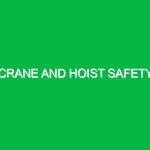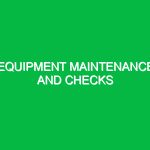In the world of construction and civil engineering, excavation and trenching are vital processes, yet they harbor significant risks. Excavation refers to the removal of earth to create a cavity, while trenching involves digging narrow, deep ditches. These activities are essential for various projects, including utilities installation, foundation work, and road repairs. However, without stringent precautions, they can lead to severe accidents, injuries, and even fatalities. This article explores excavation and trenching precautions, their relevance in the Health, Safety, and Environment (HSE) domain, and best practices to mitigate risks.
Understanding Excavation and Trenching Hazards
Excavation and trenching activities are fraught with potential hazards. Recognizing these dangers is the first step toward implementing effective safety measures. Here are some of the primary risks associated:
1. Cave-ins
Cave-ins are among the most dangerous hazards in excavation and trenching. When the walls of a trench collapse, it can bury workers under tons of soil. According to the Occupational Safety and Health Administration (OSHA), cave-ins are responsible for over 75% of excavation-related fatalities. The risk is heightened in unstable soil types, particularly sandy or wet soils. A personal anecdote that underscores this risk comes from a construction site I observed where a worker was nearly trapped. The crew had neglected to shore up the trench walls, leading to a near-fatal incident. Thankfully, the worker escaped with minor injuries, but it served as a stark reminder of the importance of proper precautions.
2. Falls
Falls into excavated areas can also result in serious injuries. Workers might slip while working on the edge of a trench or while accessing the site. The depth of the trench can exacerbate the impact of such falls. In one well-documented case, a worker fell into a 10-foot trench and suffered multiple fractures. This incident highlighted the importance of maintaining a safe distance from trench edges and using barriers.
3. Hazardous Atmospheres
Excavations can sometimes expose workers to hazardous atmospheres, including toxic gases or insufficient oxygen levels. This is particularly true in areas where methane or other gases may be present, like near landfills or older industrial sites. A local construction firm once faced a serious situation when workers began experiencing dizziness due to gas accumulation in a trench. Thankfully, they were evacuated in time, but it emphasizes the necessity of testing air quality before beginning work.
4. Striking Underground Utilities
Another notable risk involves striking underground utilities such as gas, water, or electrical lines. This can lead to explosions, electrocutions, or flooding. In one incident, a construction team accidentally severed a gas line, causing an explosion that resulted in injuries and substantial property damage. Such incidents can be prevented with proper planning and utility location services.
Safety Precautions for Excavation and Trenching
Given the risks associated with excavation and trenching, implementing safety precautions is paramount. Here are best practices that can significantly reduce hazards:
1. Conducting Site Assessments
Before any excavation or trenching begins, a thorough site assessment is essential. This includes evaluating soil types, checking for nearby structures, and identifying any underground utilities. Utilizing ground-penetrating radar can enhance safety by revealing hidden utilities. A site assessment not only informs the excavation plan but also identifies potential hazards that require mitigation.
2. Implementing Protective Systems
To prevent cave-ins, the installation of protective systems is crucial. These include:
- Shoring: This process involves using supports to prevent soil movement. It is particularly effective in deep excavations.
- Shielding: Trench boxes or shields can be deployed to protect workers from cave-ins, allowing safe access to the trench.
- Sloping: This method entails cutting back the trench walls at an angle, which reduces the likelihood of cave-ins.
Each method has its advantages and should be selected based on the specific site conditions and depth of the trench.
3. Training and Competence
Worker training is integral to excavation and trenching safety. All personnel involved in these operations should undergo training that covers hazard recognition, safe work practices, and emergency response. A training program should also include hands-on demonstrations of protective systems. In one company I collaborated with, comprehensive training led to a significant reduction in near-misses and injuries in their excavation projects.
4. Establishing a Safe Work Environment
Creating a safe work environment involves implementing several strategies, including:
- Access and Egress: Ensure that workers have safe means to enter and exit trenches. Ladders or ramps should be placed within 25 feet of workers.
- Daily Inspections: Conduct daily inspections of the excavation site and protective systems. This should be done before work begins and after any changes in conditions.
- Clear Communication: Establish clear communication among all team members. Use signals or radios to ensure everyone is aware of ongoing activities and potential hazards.
5. Planning for Hazardous Atmospheres
When working in areas where hazardous atmospheres may be present, it is vital to monitor air quality continuously. The use of gas detectors can provide early warnings of toxic gases or low oxygen levels. Workers should also be equipped with personal protective equipment (PPE) such as respirators when necessary. In a case study involving a utility company, proper monitoring and PPE usage prevented a potentially disastrous gaseous exposure incident.
Regulations and Standards Governing Excavation and Trenching
Compliance with regulations and standards is essential in managing excavation and trenching risks. The following are key regulations that govern these activities:
1. OSHA Standards
In the United States, OSHA’s Excavation Standards (29 CFR Part 1926 Subpart P) outline the requirements for excavation and trenching operations. These standards emphasize protective systems, hazard assessments, and training requirements to ensure worker safety.
2. ANSI Standards
The American National Standards Institute (ANSI) has established standards that complement OSHA regulations, focusing on safety measures and best practices in excavation and trenching.
3. Local Regulations
Various states and municipalities may also have specific regulations that govern excavation work. It is essential for contractors and site managers to be aware of local laws and compliance requirements.
Conclusion
Excavation and trenching are indispensable activities in construction, yet they come with inherent risks. By understanding these hazards and implementing comprehensive safety precautions, companies can significantly mitigate potential dangers. Training, proper protective systems, and adherence to regulations are essential components of a robust safety culture. As the industry continues to evolve, staying informed about best practices and regulatory changes will ensure that excavation and trenching operations remain safe and effective. Prioritizing health, safety, and the environment is not just a legal obligation; it’s a moral imperative that protects workers and promotes a culture of safety in the workplace.


